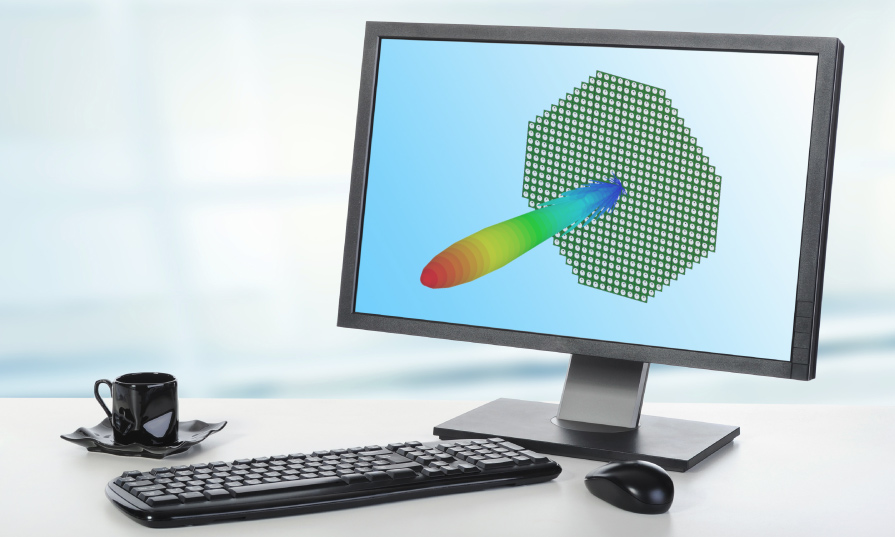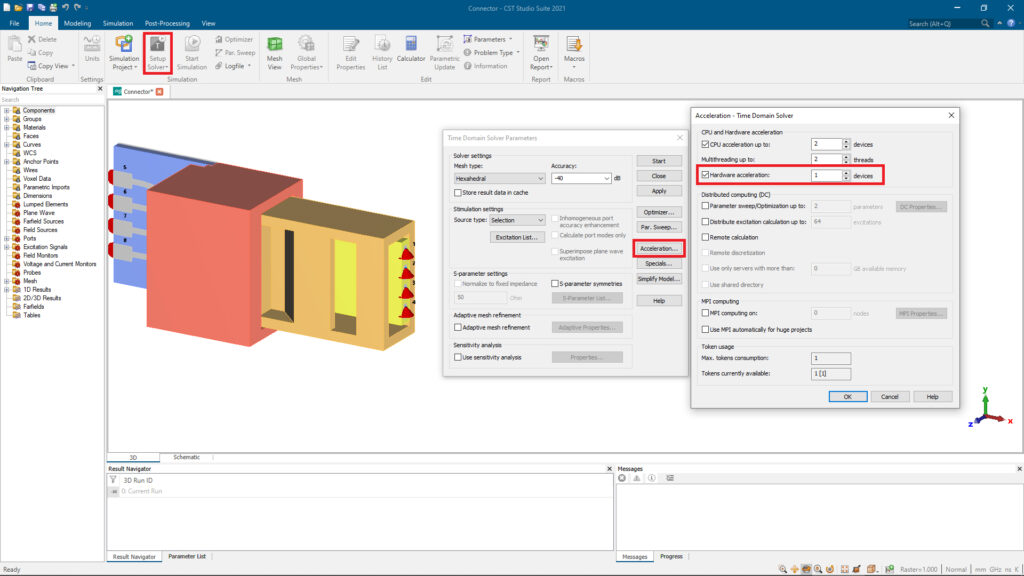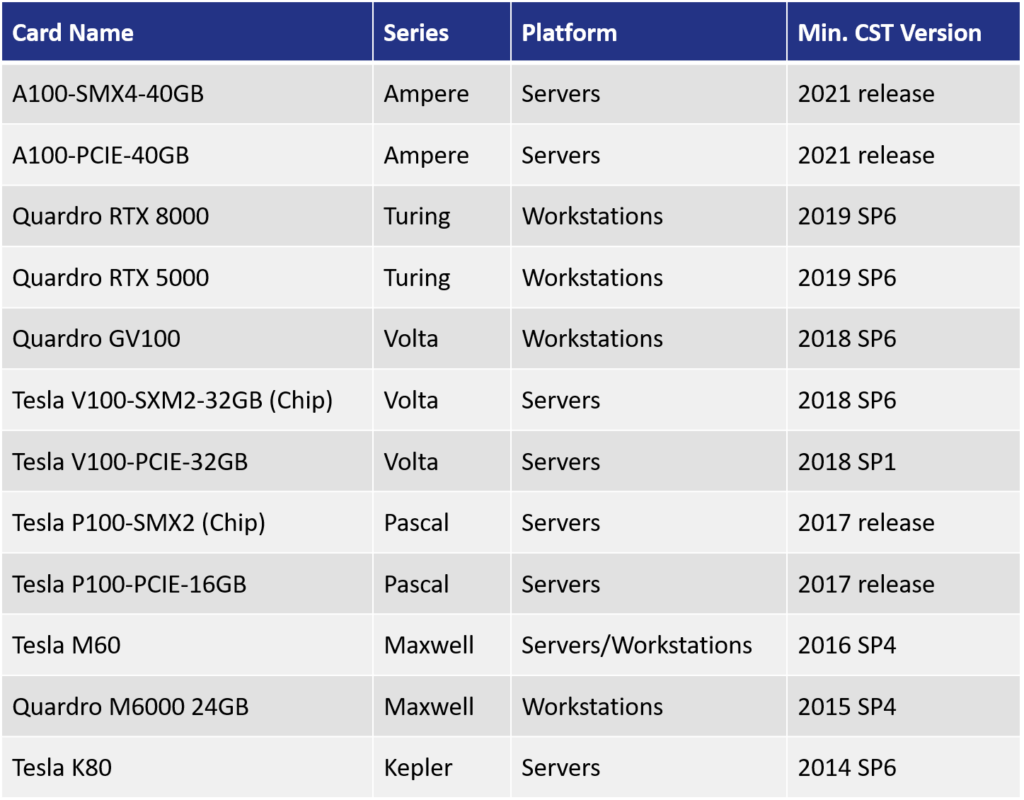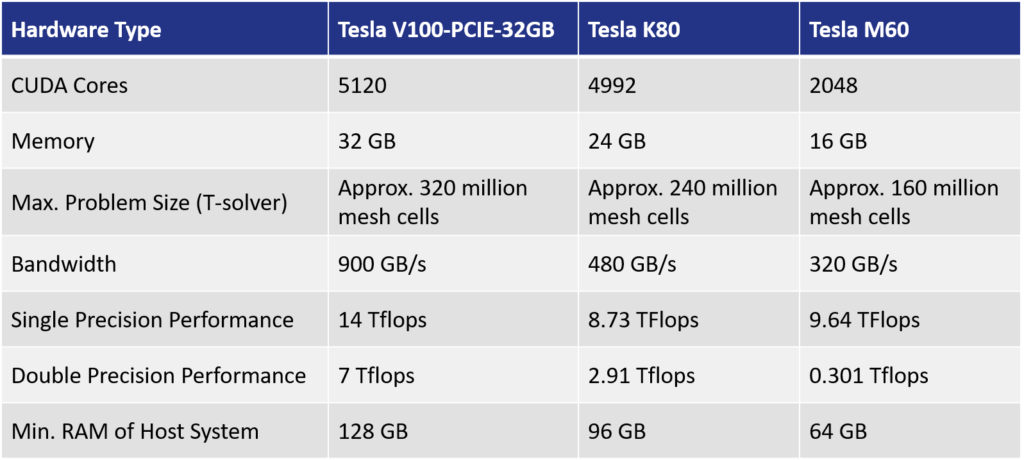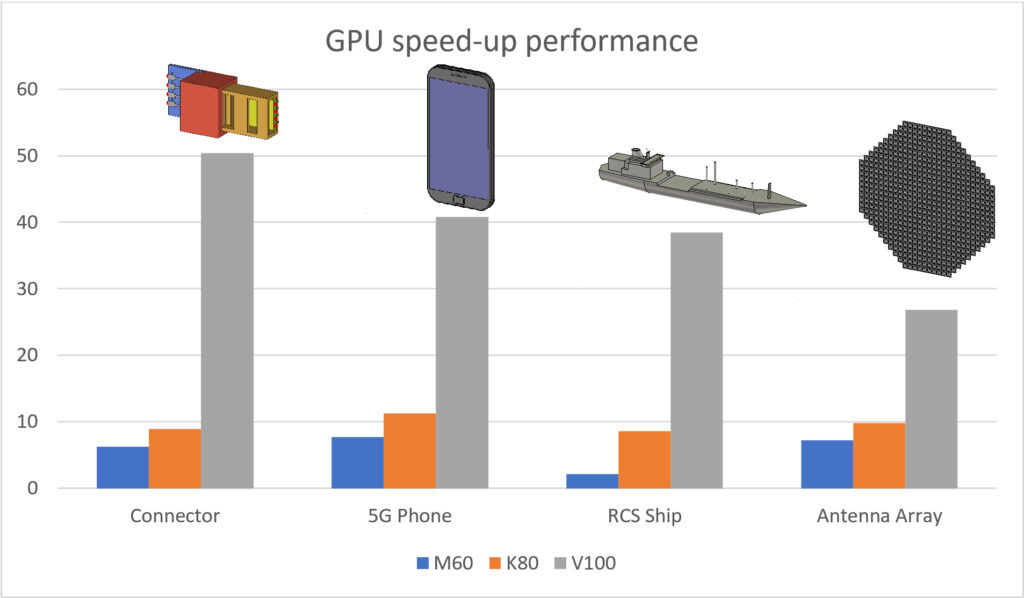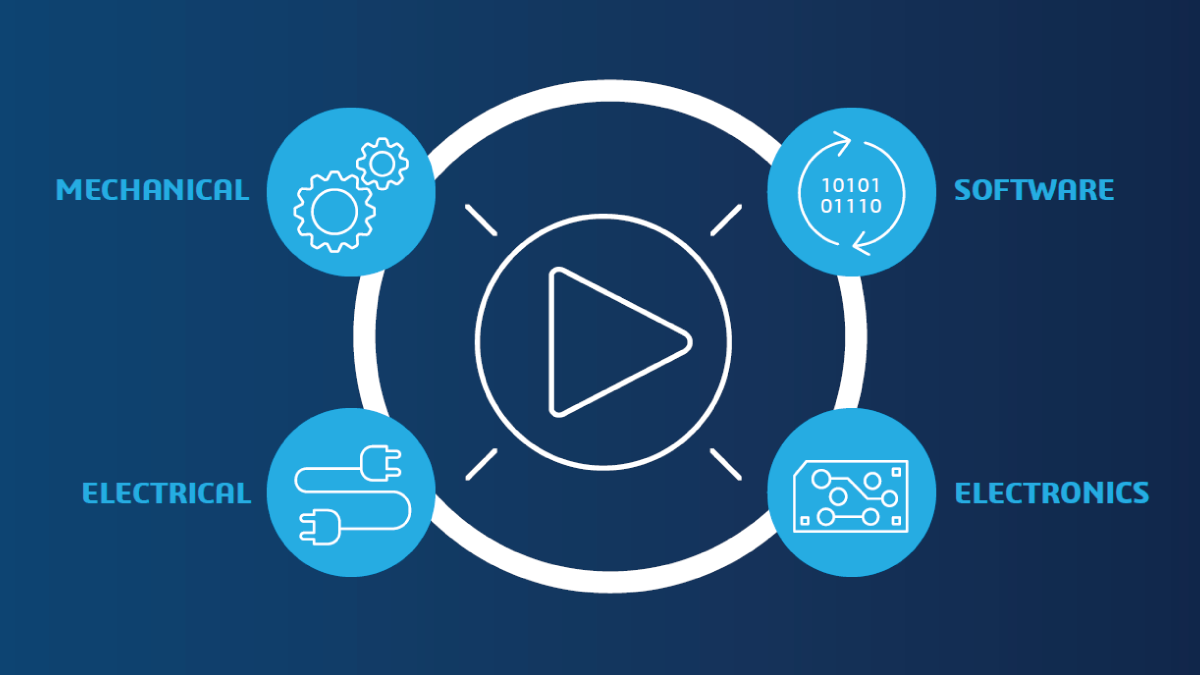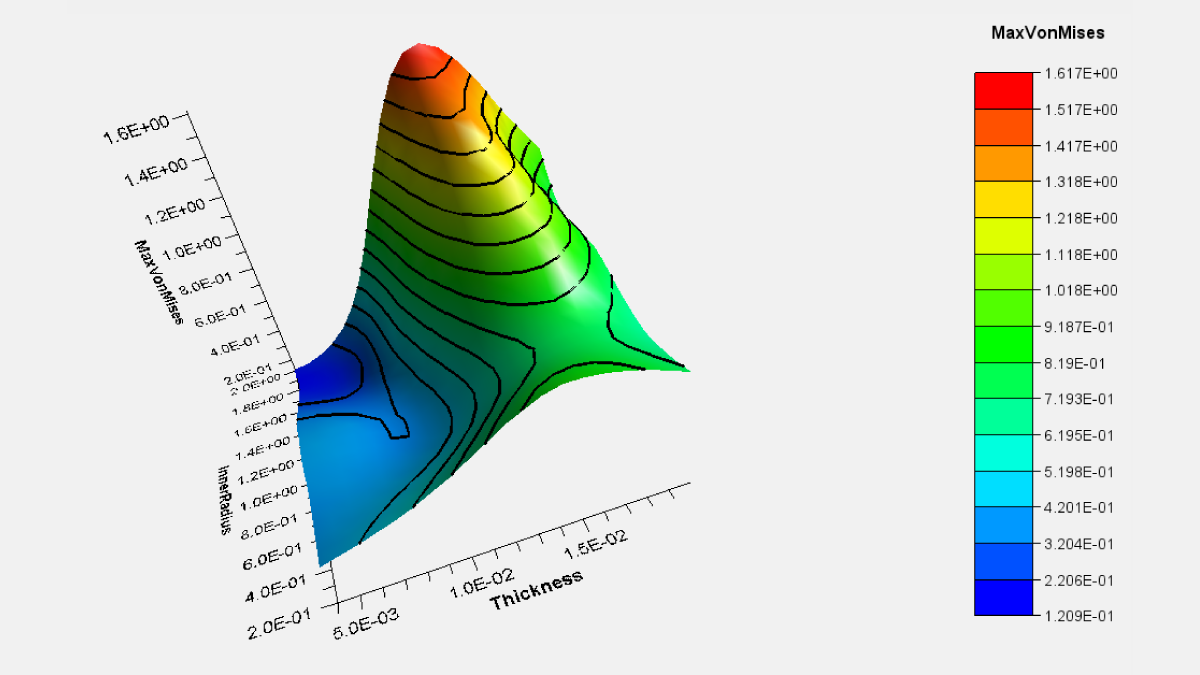Electromagnetic (EM) components and systems are crucial to the success of an ever-increasing range of products. Not only are long established industries such as automotive and communications being disrupted by new electrical and electronic devices, but advances in technology are also opening entirely new markets in fields such as medical equipment, renewable energy, and metamaterials.
With the increased product complexity and higher pressure to innovate, the use of electromagnetic analysis software has also increased to help shorten development cycles and reduce costs. Such software allows companies to virtually design, analyze, and optimize EM components and systems before building physical prototypes.
The time it takes engineers to perform EM analyses depends on the amount of data the simulation needs to process and the subject, which may include the performance and efficiency of antennas and filters, electromagnetic compatibility and interference (EMC/EMI), exposure of the human body to EM fields, electro-mechanical effects in motors and generators, and thermal effects in high-power devices. However, the computer hardware used to run the EM analysis software has a significant impact on the simulation speed. In this blog, we will focus on the run time performance of different Graphics Processing Units (GPUs) and the hardware acceleration feature for one of the leading EM analysis software package, CST Studio Suite.
Electromagnetic Simulation Processing
Before we delve into the focus of our post, it is relevant to explain that electromagnetic simulation processing can be broken into three parts: preprocessing, processing (solver run), and postprocessing. Preprocessing is to set up the problem, including discretizing the simulation domain and defining the excitations and boundary conditions. This part is done using the Central Processing Unit (CPU). Processing is done using either the CPU or the Graphics Processing Unit (GPU), solving the underlying Maxwell’s Equations to give us the solution. Postprocessing is done on the CPU after the solution is obtained, where the user further process the standard results to get something more meaningful.
Typical simulations are run on servers or workstation machines because they are more powerful. Depending on the method used, different acceleration techniques can be employed to make the simulation run faster. Simulation acceleration can be broken into two groups: software acceleration and hardware acceleration. And as we stated earlier, this blog will cover the hardware aspect.
Using Hardware Acceleration to Speed Up Simulations
CST Studio Suite offers complete solver technology to tackle all kinds of electromagnetic concerns. Obviously, a faster machine will be able to process information faster, hence giving you a solution in a shorter time. For example, a system with more CPU cores will solve the problem faster as compared to a system with a smaller number of CPU cores, thanks to the parallelization of the solver algorithm. For select solvers in CST Studio Suite, GPU can be used to speed up the simulation even more compared to using CPU. This is because GPUs have many processing units, or cores, which are very efficient in performing calculations when used in parallel.
A good example of this is the most advanced time domain solver: FIT solver based on the Finite Integration Technique in CST Studio Suite. The speed-up factor can be multiples of the CPU processing time. Meaning that you get the solution in fraction of the time with GPU compared to using CPU.
The hardware acceleration setting can be accessed by opening the Time Domain Solver Parameters dialog then click on Acceleration:
The following solvers support GPU acceleration in CST Studio Suite 2021: Time Domain Solver, Integral Equation Solver, Asymptotic Solver, Multilayer Solver, Particle-In-Cell(PIC) Solver, Conjugate Heat Transfer Solver.
Note that GPU acceleration requires acceleration tokens. For more information on how many acceleration tokens you need, please contact Inceptra Support at support@inceptra.com.
List of Supported Hardware
As new GPUs come to market every year, CST Studio Suite updates the supported devices regularly, with each major release and with subsequent service packs. In CST Studio Suite 2021, the NVIDIA® A100 cards are supported. For the complete list of supported GPU devices, please refer to the GPU Computing Guide 2021.
As a general rule of thumb, one can solve approximately 10 million mesh cells for each GB of GPU RAM when using the time domain solver. The memory capacity of the GPU therefore determines the size of the problem one can solve. This means doubling the number of GPU cards, one can solve an electromagnetic problem that’s double in size. Another important aspect of the GPU specification is the bandwidth. The memory bandwidth is a measure of the data transfer speed. High memory bandwidth together with the high number of processing units gives it the ability to offer significant speed-up for electromagnetic simulation.
Popular GPUs supported in CST Studio Suite 2021:
Hardware specifications for selected GPUs:
GPU Performance Comparisons
Different cards offer different performance enhancements. The most powerful Nvidia HPC card available now is the A100, which is only for server machines since the card itself does not offer active cooling. Workstation users can choose the Quadro GV100 because of the built-in active cooling fan. The chart below shows the simulation run time improvement for selected GPUs on various models using the Intel Xeon E2676 performance as a baseline. The solver loop time was used in this comparison for the RJ45 connector, 5G phone and Antenna array because it is a better benchmark number to use for the GPUs.
Simulation run time with different GPUs:
GPU speed-up performance compared to Intel Xeon E2676 using CST Studio Suite 2020:
Shorten Your Product Design Cycle
As demonstrated, GPUs can be used to speed up your electromagnetic simulation significantly using CST Studio Suite. The models here show a speed-up factor ranging from 6 to 50 depending on the model and GPU used. With some investment on GPU hardware, you will be able to get your simulation results in a fraction of the time, allowing you to run many more iterations and optimize your product design faster. This is especially crucial in today’s competitive environment so you can get your product to market ahead of the competition.
Questions?
If you have any questions or would like to learn more about CST Studio Suite or how to speed up simulation speed using this electromagnetic analysis solution, contact us at (954) 442-5400 or submit an online inquiry.

